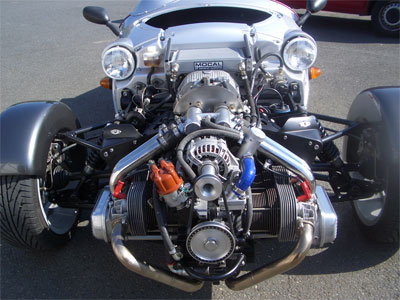 |
|
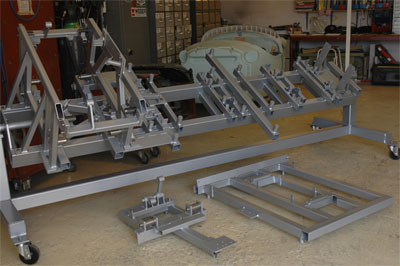 |
|
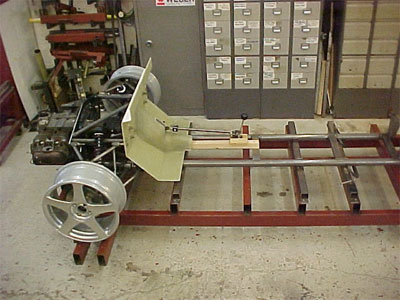 |
|
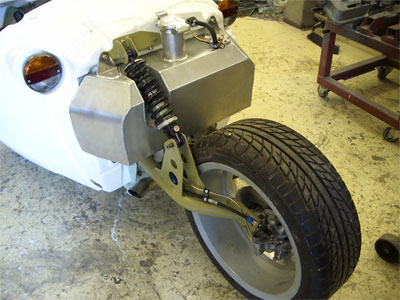 |
|
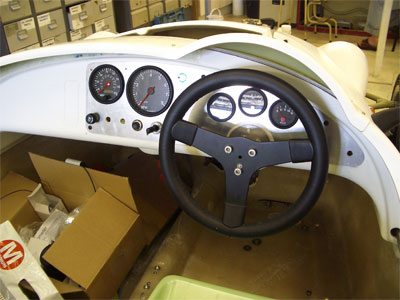 |
|
|
|
The Prototype Model
The first load-spreading frame, (chassis) was made using a special jig, essential for achieving symmetry and accuracy when one-off chassis making with a tape measure. The wheel base, like the Avion, was 2500mm and the front track, 6 inches wider than before at 1670mm. The front suspension was designed with a geometry which would eliminate bump steer and reduce torque steer to a minimum using unequal length wish-bones, coil over dampers and a substantial anti-roll bar. At the rear, a single sided swing-arm with a Golf GTi spindle, disc and calliper and coil over damper. The parts were fabricated along with the engine and gearbox were attached to the chassis.
Now was a good time to make a prototype exhaust system as the whole assembly could be worked on creating a great condition for designing and making it elegant and logical with neat strong fixings.
Following the exhaust a trial gear linkage, a front bulkhead and pedal box were made. The bespoke pedal box was more space efficient and gave us some choice of leverage, very good, as we did not intend to use a servo or tandem master cylinder.
Eventually we could stand the rolling chassis on the floor complete with working front suspension, steering, engine, gear box, front bulkhead, wheels and tyres and begin the long job of modelling the body as one piece without panel splits.
Over the following twelve months the body shape evolved using function as the primary guidance for overall shape. We designed and made a model of the inlet manifold with carburettor, also the oil filler, crank case, breather and alternator mounting assemblies. The hard points of which were necessary for modelling the engine top cover.
Over time panel joints and much of the detail had been finalised and the one piece model was split to make individual patterns. Moulds were made from the body panels.
Work on brackets, mountings and fixings took a further twelve months including other components such as a fuel tank and many versions of the rear swing arm and lower front wishbones. About eighty drawings for laser-cut parts were produced, many of which were altered frequently. Alongside this process some complete and partial production jigs were made, to be finished later as and when the whole design came clear.
Early in autumn 2004 enough prototype components had been made to trial assemble the first Zero. It was exciting to start the engine for the first time and hear the sweet exhaust note; the exhaust system had been made two years earlier.
The car went together easily and the first very short drive sitting in a temporary seat felt good. The clutch worked, the gears worked, four forward and one back - amazing, we thought no one had ever before used a VW boxer engine to drive the front wheels. Over the next few weeks all functions were made to work before the car was taken apart, painted and reassembled, made to look finished and at the last minute we took it to Exeter Kit Car Show in November 2004.
After the show it was time to get back to the development work. We needed to put some miles on the car at the airfield to sort out carburettor jets and venturi sizes, find the best spring rates, lengths, and ride heights and make new front brakes. The Golf items were poor and heavy. The front brake problem was solved by using a larger diameter motorcycle disc with a dramatic increase in calliper piston area. New wider seats and seatbelt mountings were made, the gear linkage was refined and a prototype wind deflector was tested, just a few of many jobs undertaken in the fourteen weeks before the Zero's SVA test on 17/3/05..... it passed.